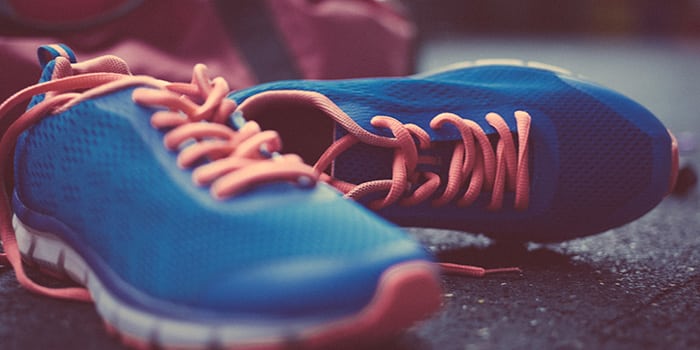When You Should Replace Your Workout Shoes

When it comes to working out, failure is a good thing. Bringing your muscles to the quivering brink of structural integrity is what makes muscles stronger. But when it comes to your workout shoes, the last thing you want is failure. Unlike muscles, shoes aren’t bound to the same laws of recovery. Once they’re done, they’re done. Use them past their “expiration point” and they may be doing you more harm than good.
It becomes important, then, to understand how long your workout shoes might last given your exercise habits and how to know when they’ve expired.
How Long Do Workout Shoes Last?
When it comes to workout shoes, you really do get what you pay for. Shoes that are purpose-designed with higher-quality materials tend to last longer. But no matter the manufacturer, studies have shown most shoes exhibit similar wear in one very important area: compression capabilities, or their ability to absorb the shock of you jumping.
According to research published by the National Strength and Conditioning Association (NSCA), the average running shoe loses 50 percent of its compression capability in 300 to 500 miles of use. Researchers concluded that most shoes should be replaced within that mileage window or every six months, whichever comes first. But how do you calculate that when your workout doesn’t center around running?
How Your Specific Workout Affects a Shoe’s Lifespan
What does your workout entail? If it’s Shaun T’s INSANITY, your workout is bound to include a lot of intense cardio and you’ll essentially be racking up those simulated miles, in addition to jumping. In this case, those compressive forces may wear out the integrity of the shoe a bit faster than just taking a jog every morning.
Programs like Body Beast and P90X definitely have their moments of high-intensity, foot-to-floor exertion, but in general these workouts will be more forgiving on your shoes than INSANITY or Focus T25. The same applies if you’re a gym-goer who trains mostly with weights: you can expect markedly longer workout shoe life with these types of workouts.
If you’re a runner, the life of your shoe depends on intensity. Someone who runs sprints, for example, will be translating exponentially more force through the sole of the shoe than someone who just walks. If you’re a sprinter, you may want to condense the NSCA’s six-month recommendation a bit.
How to Know When to Replace Your Shoes
So, how do you know if your workout shoes are ready for the dumpster? The best way is a simple visual inspection.
Don’t just look on the underside of the shoe. Take the time to inspect areas that display wear long before, such as the midsole, which is visible from the side of the shoe. If the midsole shows excessive horizontal creasing or wear on the areas that absorb the most load—the heel and the ball of the foot—then it’s probably time to toss them.
You can also perform what’s called a press test. Press on the outsole (bottom) of the shoe and inspect for compression. If the outsole gives very little, that means that the material is highly compressed and doing you about as much good as a set of snowshoes on hardwood.
Have other fitness gear related questions? Post them in the comments!
